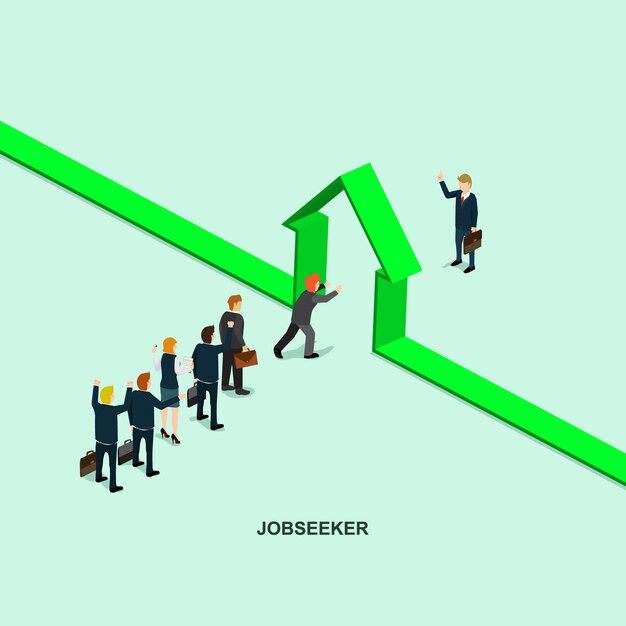Skilled Labor Shortage: US Faces Growing Crisis in Next 6 Months

A nationwide shortage of skilled labor in the US is projected to worsen in the next six months, impacting various industries and potentially hindering economic growth, as demand for skilled workers continues to outpace the available supply.
The nationwide shortage of skilled labor projected to worsen in the next 6 months is not just a statistic; it’s a developing story that touches every corner of the US economy, from construction sites to tech startups. Are we ready for the challenges ahead?
The Looming Crisis: Skilled Labor Shortage Deepens
The United States is bracing for an intensification of its existing skilled labor shortage. Experts predict that over the next six months, the gap between available jobs requiring specialized expertise and the number of qualified candidates to fill them will widen, creating significant challenges across multiple sectors.
This shortage isn’t a new phenomenon, but its projected escalation has raised alarms among economists, industry leaders, and policymakers alike. With baby boomers retiring and fewer young people entering skilled trades, the supply of experienced workers is dwindling, while demand continues to surge due to technological advancements and infrastructure projects.

Industries at Risk: Who Will Feel the Pinch?
Several industries are particularly vulnerable to this worsening shortage. These sectors rely heavily on skilled labor and are already struggling to find enough qualified workers to meet current demands.
Understanding which industries are most at risk can help businesses and policymakers develop targeted strategies to mitigate the potential impact of the shortage.
Construction and Manufacturing
The construction and manufacturing industries are facing critical shortages of skilled tradespeople, including electricians, plumbers, carpenters, welders, and machinists. These roles require years of training and experience, and the lack of qualified candidates is delaying projects and increasing costs.
Healthcare and Technology
In healthcare, there’s a growing need for nurses, medical technicians, and specialized healthcare professionals. Similarly, the technology sector is grappling with a shortage of software developers, data scientists, cybersecurity experts, and other tech-savvy individuals.
- Construction Delays: Projects face extended timelines due to lack of skilled tradespeople.
- Increased Costs: Rising labor costs drive up project expenses, impacting affordability.
- Innovation Slowdown: Shortage of tech professionals hinders technological advancement.
- Healthcare Strain: Limited healthcare staff leads to reduced patient care quality.
These industries are crucial to the nation’s economy, and the skilled labor shortage poses a significant threat to their continued growth and stability. Addressing this challenge requires a multi-faceted approach involving education, training, and immigration policies.
In conclusion, the construction, manufacturing, healthcare, and technology sectors are all at risk due to the deepening skilled labor shortage. Proactive measures must be taken to ensure these industries can continue to thrive and contribute to the overall economic well-being of the US.
Root Causes: Why Is This Happening?
Several factors are contributing to the skilled labor shortage in the US. Understanding these root causes is crucial for developing effective solutions and addressing the systemic issues that are perpetuating the problem.
Analyzing the demographic shifts, educational trends, and economic factors that underlie the shortage can provide valuable insights for policymakers, educators, and business leaders.
Demographic Shifts and Retirement
The retirement of the baby boomer generation is a major driver of the shortage. As experienced workers leave the workforce, there are not enough younger individuals to replace them. This demographic shift is creating a skills gap that is difficult to fill.
Skills Gap and Education
There is a growing disconnect between the skills that employers need and the skills that job seekers possess. Many educational institutions are not adequately preparing students for the demands of the modern workforce, leading to a skills gap that prevents individuals from filling available jobs.

- Aging Workforce: Retirement of skilled workers without adequate replacements.
- Inadequate Training: Educational institutions failing to meet industry demands.
- Negative Perception: Skilled trades often viewed as less desirable career paths.
- Immigration Policies: Restrictive policies limiting access to skilled foreign workers.
These interconnected factors are contributing to the widening gap between the supply and demand of skilled labor in the US. Addressing each of these issues is essential for alleviating the shortage and ensuring a strong and competitive workforce.
In conclusion, the skilled labor shortage is driven by a combination of demographic shifts, skills gaps in education, negative perceptions of skilled trades, and restrictive immigration policies. A comprehensive approach is needed to tackle these root causes and ensure a robust and skilled workforce for the future.
Potential Impacts: Economic and Social Consequences
The escalating skilled labor shortage is projected to have far-reaching economic and social consequences. These impacts could affect various aspects of American life.
Examining these potential consequences can help stakeholders understand the urgency of addressing the shortage and the importance of implementing effective solutions.
Economic Slowdown and Reduced Productivity
A shortage of skilled workers can lead to an economic slowdown as businesses struggle to expand and take on new projects. Reduced productivity can also result in decreased competitiveness and lower overall economic output.
Wage Inflation and Income Inequality
As demand for skilled workers increases, wages for these individuals are likely to rise. This wage inflation can exacerbate income inequality, as those without specialized skills may struggle to keep up with the rising cost of living.
- Slower Growth: Inability to meet demand leads to reduced economic expansion.
- Higher Prices: Increased labor costs passed on to consumers.
- Reduced Innovation: Shortage of tech talent stifles technological advancements.
- Social Disparities: Wage inflation widens the gap between the skilled and unskilled.
These economic and social consequences highlight the importance of taking proactive measures to address the skilled labor shortage. Investing in education, training, and workforce development programs can help mitigate these potential impacts and ensure a more equitable and prosperous future for all Americans.
In conclusion, the skilled labor shortage poses significant economic and social risks, including economic slowdown, wage inflation, reduced innovation, and increased social disparities. Addressing this challenge requires a concerted effort from government, industry, and educational institutions to invest in skills development and promote inclusive economic growth.
Possible Solutions: Strategies for Addressing the Shortage
Addressing the skilled labor shortage requires a multi-faceted approach that involves investing in education and training, promoting skilled trades, and reforming immigration policies.
Exploring these potential solutions can help policymakers, educators, and business leaders develop effective strategies to alleviate the shortage and ensure a strong and competitive workforce.
Investing in Education and Training
Providing more funding for vocational training programs and apprenticeships can help prepare individuals for skilled jobs. Additionally, aligning educational curricula with the needs of employers can ensure that graduates have the skills and knowledge that are in demand.
Promoting Skilled Trades
Efforts to promote skilled trades as viable and rewarding career paths can help attract more young people to these fields. This can include raising awareness of the high earning potential and job security associated with skilled trades, as well as providing mentorship and support for individuals pursuing these careers.
- Vocational Programs: Increased funding and resources for skills-based training.
- Apprenticeships: Expanding opportunities for on-the-job learning.
- Career Awareness: Promoting the value and potential of skilled trades.
- Immigration Reform: Streamlining pathways for skilled foreign workers.
By investing in education and training, promoting skilled trades, and reforming immigration policies, the US can begin to address the skilled labor shortage and ensure a strong and competitive workforce for the future.
In conclusion, solving the skilled labor shortage involves strategically investing in education and training programs, actively promoting skilled trades as attractive career options, and implementing sensible immigration reforms. A collaborative effort across sectors is essential to build a robust workforce capable of meeting the evolving demands of the US economy.
The Role of Technology: Can Automation Fill the Gap?
While technology and automation can offer potential solutions to mitigate the impact of the skilled labor shortage, they are not a complete substitute for human expertise.
Understanding the potential and limitations of automation in addressing the shortage is crucial for developing a balanced approach that leverages technology while also investing in human capital.
Automation and Efficiency
Automation can help increase efficiency and productivity by automating repetitive tasks and processes. This can free up skilled workers to focus on more complex and strategic activities. However, automation requires skilled workers to operate and maintain the technology, creating a new set of demands for specialized expertise.
Limitations of Automation
Automation cannot fully replace human skills such as critical thinking, problem-solving, and creativity. Many jobs require a combination of technical skills and soft skills that are difficult to automate. Additionally, there are ethical and social considerations associated with widespread automation, including job displacement and the need for workforce retraining.
- Efficiency Gains: Automation streamlines processes, increasing productivity.
- New Skill Demands: Operating and maintaining automated systems requires expertise.
- Human Element: Critical thinking and problem-solving remain essential.
- Ethical Concerns: Job displacement and the need for retraining are important considerations.
Technology and automation can play a valuable role in mitigating the impact of the skilled labor shortage by increasing efficiency and productivity. However, a balanced approach is needed that also invests in human capital and addresses the ethical and social considerations associated with widespread automation.
In conclusion, automation offers a promising avenue for enhancing efficiency and partially alleviating the skilled labor shortage, but it is critical to recognize its limitations. A strategic blend of technological advancements and human skill development is necessary to ensure a resilient and adaptable workforce that can thrive in the evolving landscape of the US economy.
| Key Point | Brief Description |
|---|---|
| 📉 Growing Shortage | US faces an escalating shortage of skilled workers across industries. |
| 🛠️ Industries at Risk | Construction, manufacturing, healthcare, and tech sectors are severely impacted. |
| 🧑🎓 Root Causes | Aging workforce, skills gap, and lack of vocational training contribute to the shortage. |
| 💡 Possible Solutions | Investing in education, promoting skilled trades, and immigration reforms are crucial. |
Frequently Asked Questions
▼
The main reason is the retirement of the baby boomer generation, leading to many skilled workers leaving the workforce without enough trained replacements to fill their roles.
▼
The most affected industries include construction, manufacturing, healthcare, and technology, which heavily rely on specialized expertise and are already struggling to find qualified workers.
▼
Measures include increased funding for vocational training, aligning educational curricula with employer needs, and promoting skilled trades as viable career paths to attract younger individuals.
▼
Automation can increase efficiency by handling repetitive tasks, but it requires skilled workers to operate and maintain the technology, and cannot fully replace human critical thinking.
▼
Failure to address the shortage can lead to slower economic growth, reduced productivity, wage inflation, and increased income inequality, impacting the overall competitiveness and stability of the US economy.
Conclusion
The impending intensification of the skilled labor shortage in the US presents a substantial challenge that demands immediate and comprehensive action. By investing in education and training, promoting skilled trades, and embracing strategic automation, the nation can mitigate the potential economic and social fallout and secure a prosperous future for its workforce.





